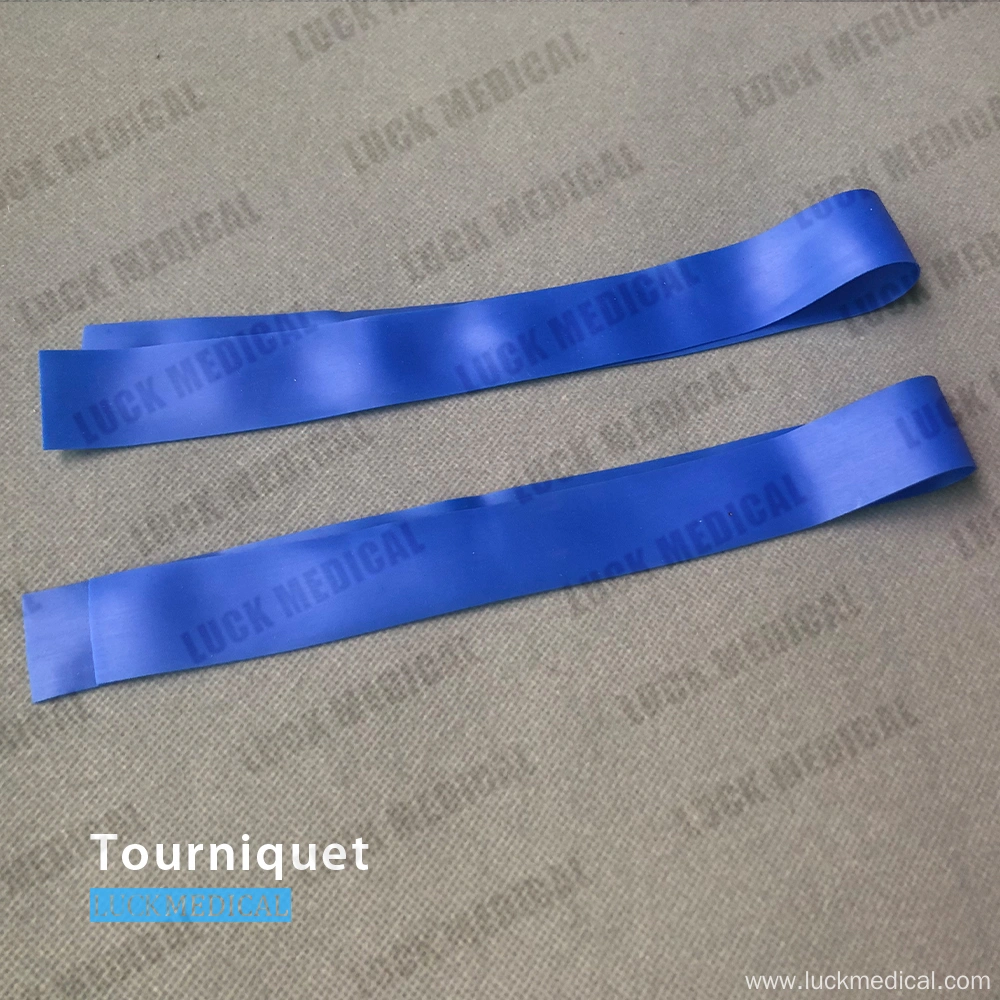Use Tourniquet To Stop Bleeding, Should Notice What Problem?
Tourniquet hemostasis is used for arterial bleeding caused by trauma to the extremities or for bleeding in which other hemostasis methods have failed. Tourniquet can block the limb blood circulation and achieve the purpose of effective hemostasis, but it can also cause the risk of limb gangrene.
The types of tourniquet commonly used are rubber tourniquet, pneumatic tourniquet, cloth tourniquet and so on. There are also (RenkangShuzhi) disposable tourniquet, with a unique design of broken band, easy to use, made of high-end TPE material, clinical one-time use effectively avoid cross infection, in line with the Ministry of Health to promote the "one person, one needle, one tube, one towel area" of national policy requirements.

Only the correct use of tourniquet can not only play the role of hemostasis, but also prevent and reduce the occurrence of its complications.
So what should be paid attention to when using tourniquet to stop bleeding?
1. Before using the tourniquet, the affected limb should be raised for a moment to allow venous return before using.
2. The tourniquet should be placed at the proximal end of the wound.
Generally, the upper limb is in the upper 1/3 of the upper arm, and the lower limb is in the middle and lower 1/3 of the thigh. Tourniquet should not be used in the middle third of the upper arm, so as not to compress the nerve and cause upper limb paralysis. A tourniquet below the elbow or knee joint does not stop bleeding.
3. Long ligation time can cause limb ischemia and gangrene.
Therefore, the use time of tourniquet is generally not more than 1 hour, and the extended time should be relaxed for 2 to 3 minutes every 1 hour (upper or lower limbs). During relaxation, acupressure was used to temporarily stop bleeding. In the cold season, please relax every 30 minutes. If the ligation site is longer than 2 hours, it should be ligated higher than the original position. The total time must not exceed 4 hours. Otherwise, it will cause compression syndrome after releasing the tourniquet.
4. Tourniquet tightness is moderate
Easy to damage nerves and blood vessels, causing nerve paralysis and thrombosis; Too much relaxation will not achieve the purpose of stopping the bleeding. It is generally limited to the inability to reach the distal arterial pulse or the cessation of bleeding.
5. Before tying the tourniquet, use a towel, other cloth, cotton pad, and do not directly Pierce the skin; In an emergency, you can roll up your pant legs and cuffs and tie a tourniquet. However, it must be smoothed out to avoid wrinkles.
6. Patients with more bleeding can not afford to bleed again, the distal limb can not be preserved, and the tourniquet should not be relaxed at the risk of life.
7. There must be a tourniquet signature, indicating the time and location of the tourniquet, and do a good job of transfer and handover. Tourniquet hemostasis of the injured should be sent to the hospital as soon as possible to prevent the distal limb of the bleeding ischemic necrosis.
